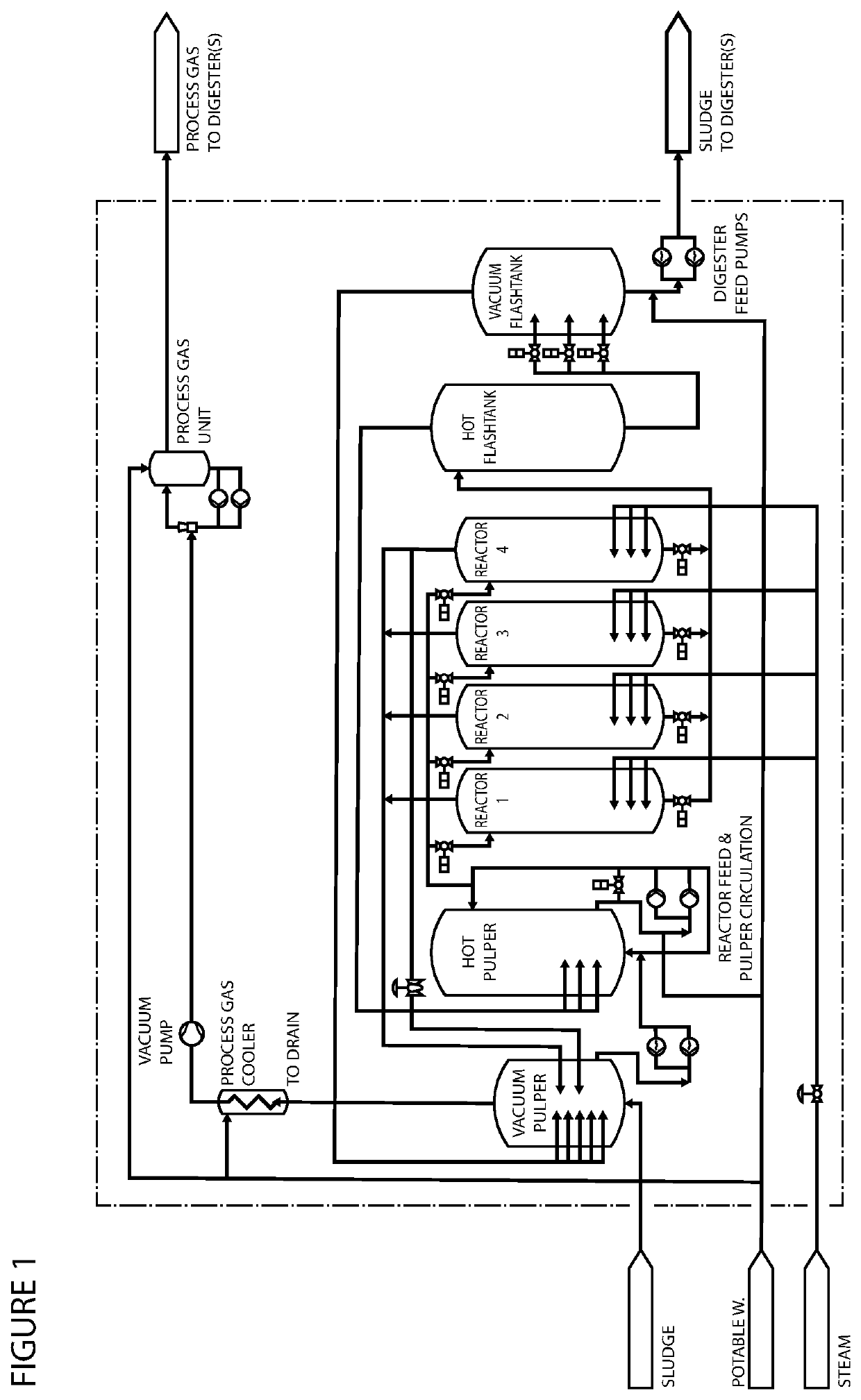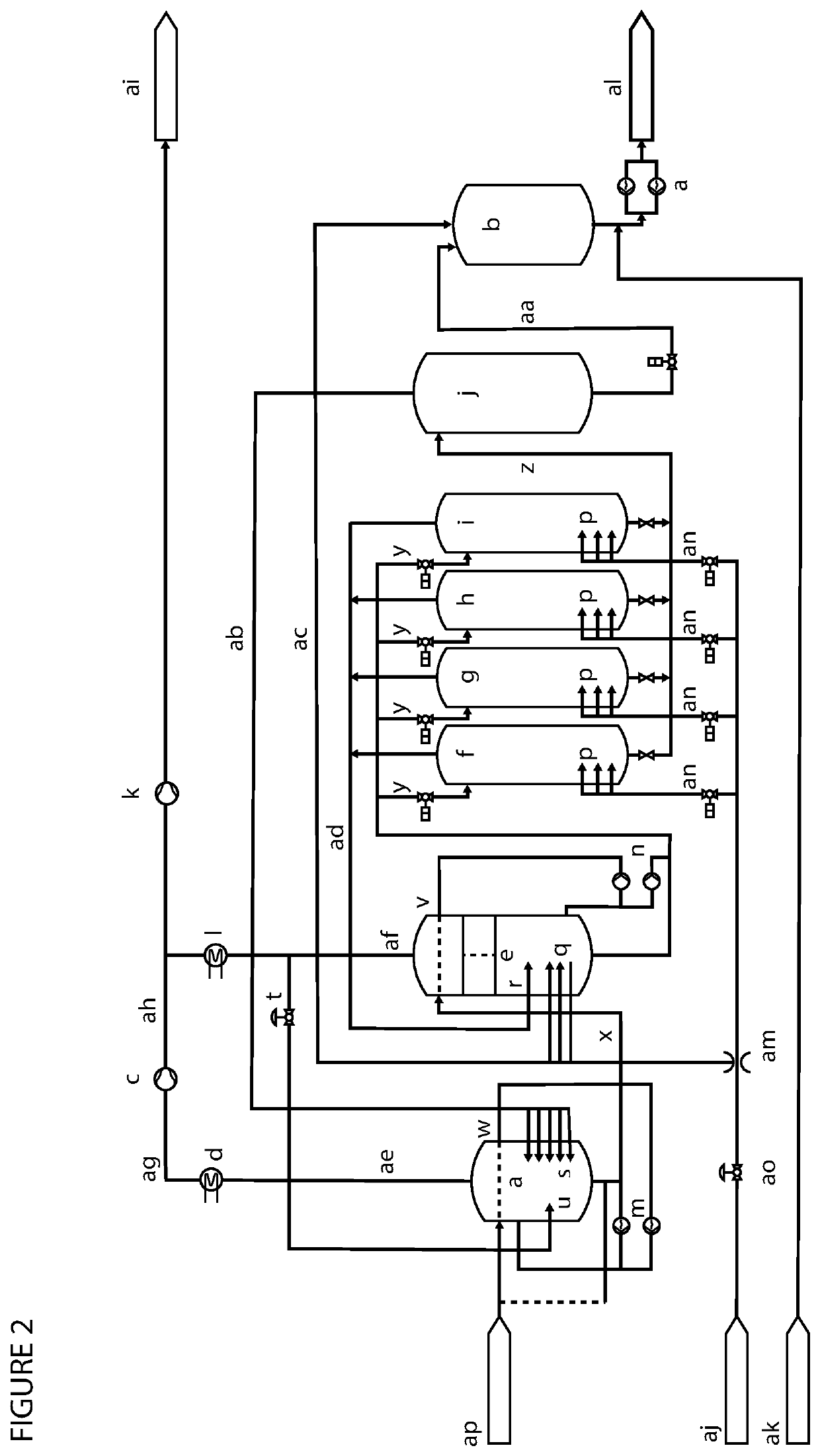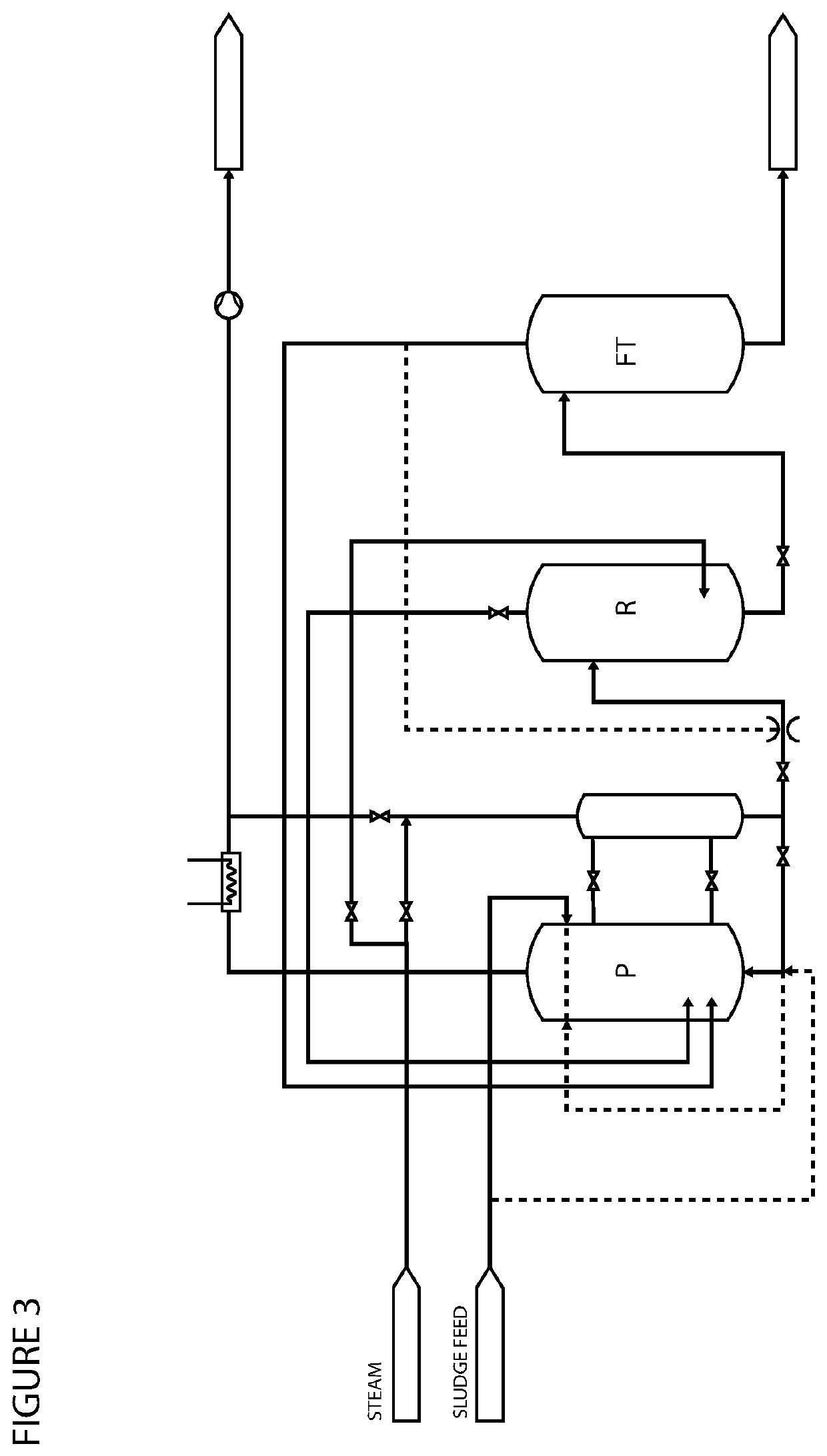Two-Times-Two Tank Process and System
a technology of thermal hydrolysis and tank process, which is applied in the direction of biological water/sewage treatment, biological sludge treatment, waste based fuel, etc., can solve the problems of loss of thermal energy, and more heat loss to the vacuum system, so as to reduce the consumption of steam and reduce the cost of operation. , the effect of reducing the amount of was
- Summary
- Abstract
- Description
- Claims
- Application Information
AI Technical Summary
Benefits of technology
Problems solved by technology
Method used
Image
Examples
example 1
[0134]A plant according to a preferred embodiment of the present invention comprises at least two vacuum vessels one upstream the THP (pulper 1(a)) and, one downstream the THP (flashtank 2(b)). The two vessels are connected with a pipe from top of flashtank 2(b) through lances distributed in piper 1(a). A vacuum compressor (c) e.g. liquid ring compressor, connected to the headspace of the pulper 1(a) will produce a vacuum in the head space of the piper. The work produced by the vacuum compressor will be made on the gases that are not condensed in the pulper 1(a) and the subsequent condenser cooler (d). Flash steam from flashtank 2(b) will be pulled through the pulper 1(a) and condense as it enters the liquid phase in piper 1(a) through the flash steam lances(s). The pulper 1 steam partial pressure will be around 0.2 bar, which means boiling point of approx. 60° C., while the total pressure might be somewhat higher due to the presence of other non-condensable gases. Some steam will f...
example 2
[0144]In the present example, the additional pulper and flashtank required in a method or plant according to the present invention will be referred to as pulper a and flashtank b, respectively. A THP plant with the invention will also include pulper e and flashtank j that are similar to vessels in existing THP plants. The main process flows are shown in the figure below.
[0145]FIGS. 1 and 2 show two different embodiments of a system according to the present invention.
[0146]Pulper a
[0147]All lines for ventilation of non-condensable gases from pulper e will go to below liquid level in pulper a. Pulper a will be fitted with a vacuum pump and be at the lowest pressure in the system. The temperature and pressure in the headspace of pulper a will be measured to calculate the partial pressure of steam and other gases. The goal is to control the total pressure in pulper a to prevent the substrate from boiling while maintaining the concentration of non-condensable gases at a low level. There ...
example 3
[0162]In most jurisdictions around the world, a plant or system comprising pressure vessels needs to be inspected on a regular basis, e.g. on annual basis, as part of the certification of the industrial facilities (e.g. a plant or system according to the present invention) comprising pressure vessels. National or regional regulations may regulate the specific inspection frequency required. As a consequence of the time required for such inspections, a plant according to the present invention as described in examples 1 and 2 will be subjected to certain down-time periods leading to a reduced capability to process liquid substrates. In such situations the stable plant operation of a plant or a system according to either of examples 1 or 2 above can be achieved by a) implementing additional elements / features allowing for the safe isolation of each of the one or more pulper and / or flashtank units, thereby enabling a reduced operation mode allowing for individual inspection of each pulper...
PUM
| Property | Measurement | Unit |
|---|---|---|
| temperatures | aaaaa | aaaaa |
| temperatures | aaaaa | aaaaa |
| temperatures | aaaaa | aaaaa |
Abstract
Description
Claims
Application Information
 Login to View More
Login to View More - R&D
- Intellectual Property
- Life Sciences
- Materials
- Tech Scout
- Unparalleled Data Quality
- Higher Quality Content
- 60% Fewer Hallucinations
Browse by: Latest US Patents, China's latest patents, Technical Efficacy Thesaurus, Application Domain, Technology Topic, Popular Technical Reports.
© 2025 PatSnap. All rights reserved.Legal|Privacy policy|Modern Slavery Act Transparency Statement|Sitemap|About US| Contact US: help@patsnap.com



